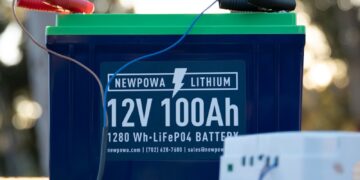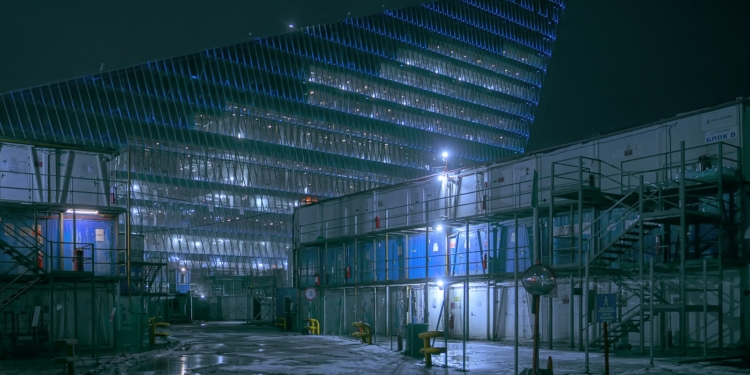Meta announces Hyperion, a 5GW data center buildout in Louisiana, with plans to invest $60–65 billion in AI infrastructure this year and hundreds of billions more to power superintelligence.
Meta’s Project Hyperion Signals the Start of a Superintelligent Infrastructure Era
Meta is making waves once again with the announcement of Project Hyperion, a $10 billion data center campus planned for Richland Parish, Louisiana. This is not just another data center—this is the beginning of an infrastructure revolution to support the rise of artificial superintelligence.
The tech giant plans to deliver 2 gigawatts (GW) of power capacity by 2030, with an ambitious expansion target of 5 GW in later phases. This kind of scale puts Hyperion among the most energy-intensive and transformative digital infrastructure projects in the world.
In a move that stunned even Silicon Valley insiders, Meta announced $60–65 billion in AI-focused data center capital expenditures for 2025, a sharp increase from last year’s $35–40 billion. And that’s just the beginning.
“We’re going to invest hundreds of billions of dollars into compute to build superintelligence,” said CEO Mark Zuckerberg on Threads. “We have the capital from our business to do this, and I’m focused on building the most elite and talent-dense team in the industry.”
The Infrastructure Ripple Effect: Powering Superintelligence
Meta’s multibillion-dollar commitment to Project Hyperion is more than just a play for AI dominance—it’s a wake-up call for global infrastructure planners, utility operators, energy developers, and grid architects. Delivering gigawatts of electricity to hyperscale data centers is a challenge unlike any in industrial history, requiring a synchronized reinvention of how power is generated, stored, delivered, and managed.
At its core, this signals a new era of convergence between digital innovation and energy infrastructure. Meta’s plans will echo across the energy value chain, igniting demand for smarter, cleaner, faster, and more flexible energy systems. Here’s a closer look at the critical components:
🔆 Renewable Energy Integration: More than Green, It’s Grid-Defining
AI data centers will demand 24/7 access to clean power, creating pressure for both capacity and consistency. Solar and wind can help decarbonize these campuses, but their variable nature poses a challenge.
To make it work, developers must design systems that:
- Combine solar PV, wind, and geothermal intelligently
- Integrate real-time curtailment strategies and grid interactivity
- Comply with emerging state and federal clean energy mandates
Meta’s push for low-carbon compute will also spur innovation in power purchase agreements (PPAs), virtual PPAs, and green tariffs.
🔋 Battery Energy Storage Systems (BESS): The AI Grid’s Shock Absorbers
Battery energy storage is no longer a backup solution—it’s the core buffer between AI’s relentless power draw and the intermittent nature of renewables. To deliver stability and redundancy to campuses like Hyperion, utility-scale BESS must:
- Provide grid frequency regulation
- Smooth peak demand curves and absorb surplus energy
- Integrate with microgrid controllers and backup gen-sets
Expect to see multi-hour, high-MWh lithium-ion and long-duration storage (LDS) technologies like iron-air, zinc, and flow batteries become more common as capacity requirements scale.
⚡ Microgrids and Substation Design: Localized Resilience at Mega Scale
When 2–5 GW is needed on-site, traditional utility connections aren’t enough. Microgrids, paired with flexible substations, can give AI campuses autonomy and resilience.
- Advanced substations must integrate high-voltage transmission (HV), transformer flexibility, and bi-directional energy flow
- AI-powered microgrid controllers will enable predictive load balancing, fault isolation, and energy market optimization
This localized approach enhances resilience against outages, cyber threats, and market volatility—a must for data centers that can’t go offline.
🌡️ HVAC & Thermal Optimization: Cooling the Compute Core
Supercomputing generates superheat. As AI workloads push data centers into new thermal thresholds, traditional HVAC systems are getting overwhelmed.
New trends include:
- Liquid cooling and immersion cooling for high-density racks
- AI-powered cooling optimization systems to regulate airflow and temperature
- Use of waste heat recovery systems for district heating or co-location benefits
Thermal management now defines operational cost and carbon performance—especially in hot, humid regions like the American South where Hyperion is being developed.
🧠 Digital + Electrical Backbone Systems: The Neural Network Behind the Machines
As data centers scale, so does the complexity of their electrical and digital infrastructure. Power distribution units (PDUs), switchgear, cabling, transformers, and monitoring systems must all be:
- Cybersecure and remotely managed
- Designed for redundancy and modularity
- Future-proofed to support quantum- or optical-based AI compute systems
Grid-edge intelligence, AI-based energy management platforms, and advanced metering are no longer luxuries—they are foundational to uptime, efficiency, and energy reporting.
Pacifico Energy Powers What’s Next
At Pacifico Energy, we are proud to be on the front lines of this infrastructure revolution. Our team designs and implements solutions to meet the extreme demands of today’s AI infrastructure buildouts.
We partner with developers, utilities, and tech leaders to deliver:
- Utility-scale solar and battery projects
- AI-ready microgrids that integrate renewables, BESS, and backup generation
- Substation and interconnection consulting for hyperscale campuses
- Turnkey EPC support and energy-as-a-service (EaaS) models that ease CapEx constraints while maximizing energy performance
We understand what it takes to build energy systems that are not only large—but also resilient, renewable, and ready for tomorrow’s compute revolution.
🌐 www.pacificoenergy.com
meta, hyperion, data centers, artificial intelligence, energy infrastructure, superintelligence, louisiana, grid, electrical infrastructure, pacifico energy, ai compute, hyperscale, clean energy, battery storage
Categories:
Energy Infrastructure | AI & Technology | Clean Energy | Digital Infrastructure



















